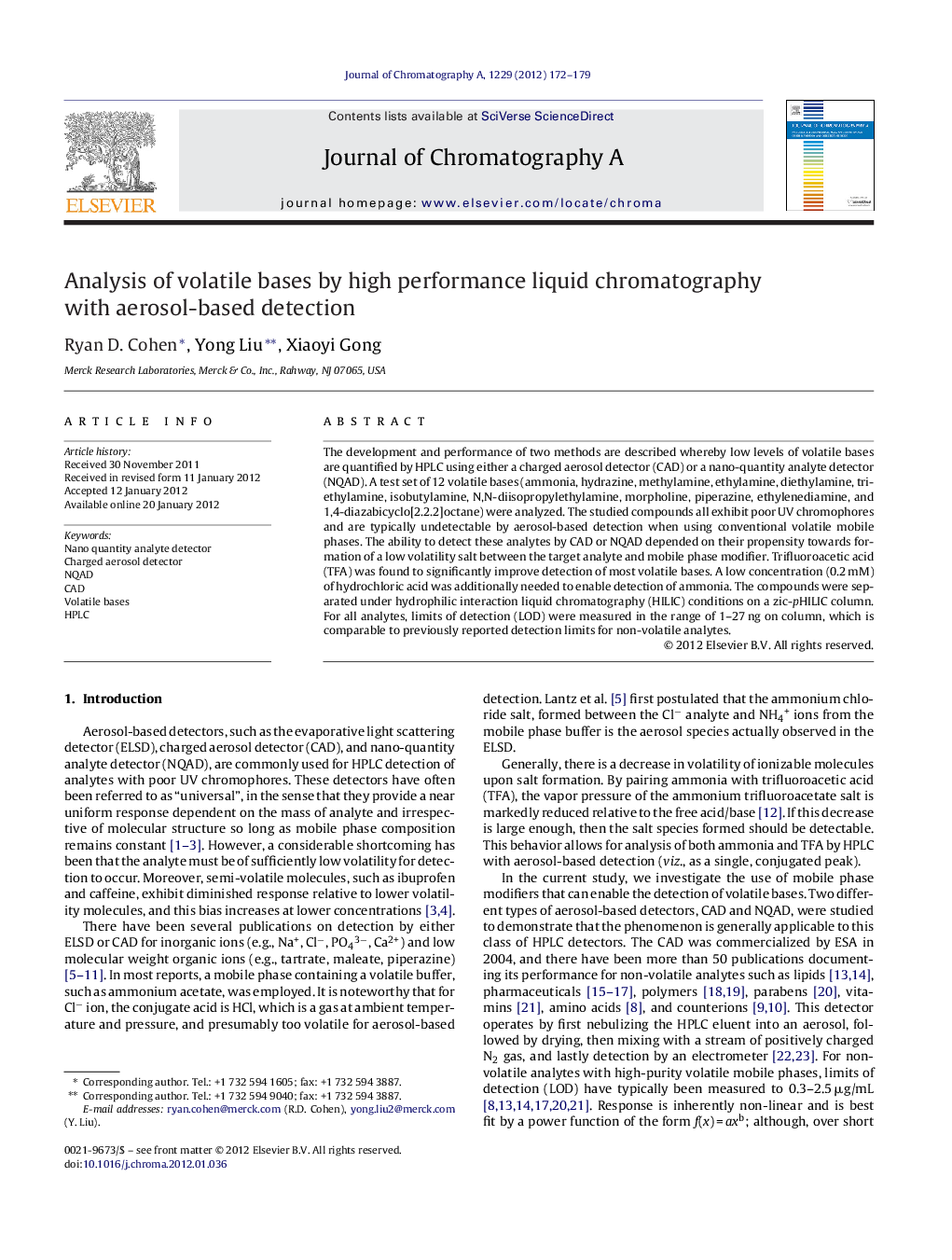| Article ID | Journal | Published Year | Pages | File Type |
|---|---|---|---|---|
| 1203045 | Journal of Chromatography A | 2012 | 8 Pages |
The development and performance of two methods are described whereby low levels of volatile bases are quantified by HPLC using either a charged aerosol detector (CAD) or a nano-quantity analyte detector (NQAD). A test set of 12 volatile bases (ammonia, hydrazine, methylamine, ethylamine, diethylamine, triethylamine, isobutylamine, N,N-diisopropylethylamine, morpholine, piperazine, ethylenediamine, and 1,4-diazabicyclo[2.2.2]octane) were analyzed. The studied compounds all exhibit poor UV chromophores and are typically undetectable by aerosol-based detection when using conventional volatile mobile phases. The ability to detect these analytes by CAD or NQAD depended on their propensity towards formation of a low volatility salt between the target analyte and mobile phase modifier. Trifluoroacetic acid (TFA) was found to significantly improve detection of most volatile bases. A low concentration (0.2 mM) of hydrochloric acid was additionally needed to enable detection of ammonia. The compounds were separated under hydrophilic interaction liquid chromatography (HILIC) conditions on a zic-pHILIC column. For all analytes, limits of detection (LOD) were measured in the range of 1–27 ng on column, which is comparable to previously reported detection limits for non-volatile analytes.
► Aerosol detection has been limited to non-volatile and some semi-volatile analytes. ► Acidic mobile phase modifiers (e.g., TFA, HCl) enabled detection of volatile bases. ► Proposed mechanism is formation of non-volatile salts between modifier and analyte. ► 12 volatile bases (e.g., NH3, H2NNH2) analyzed with low detection limits (≤27 ng).
